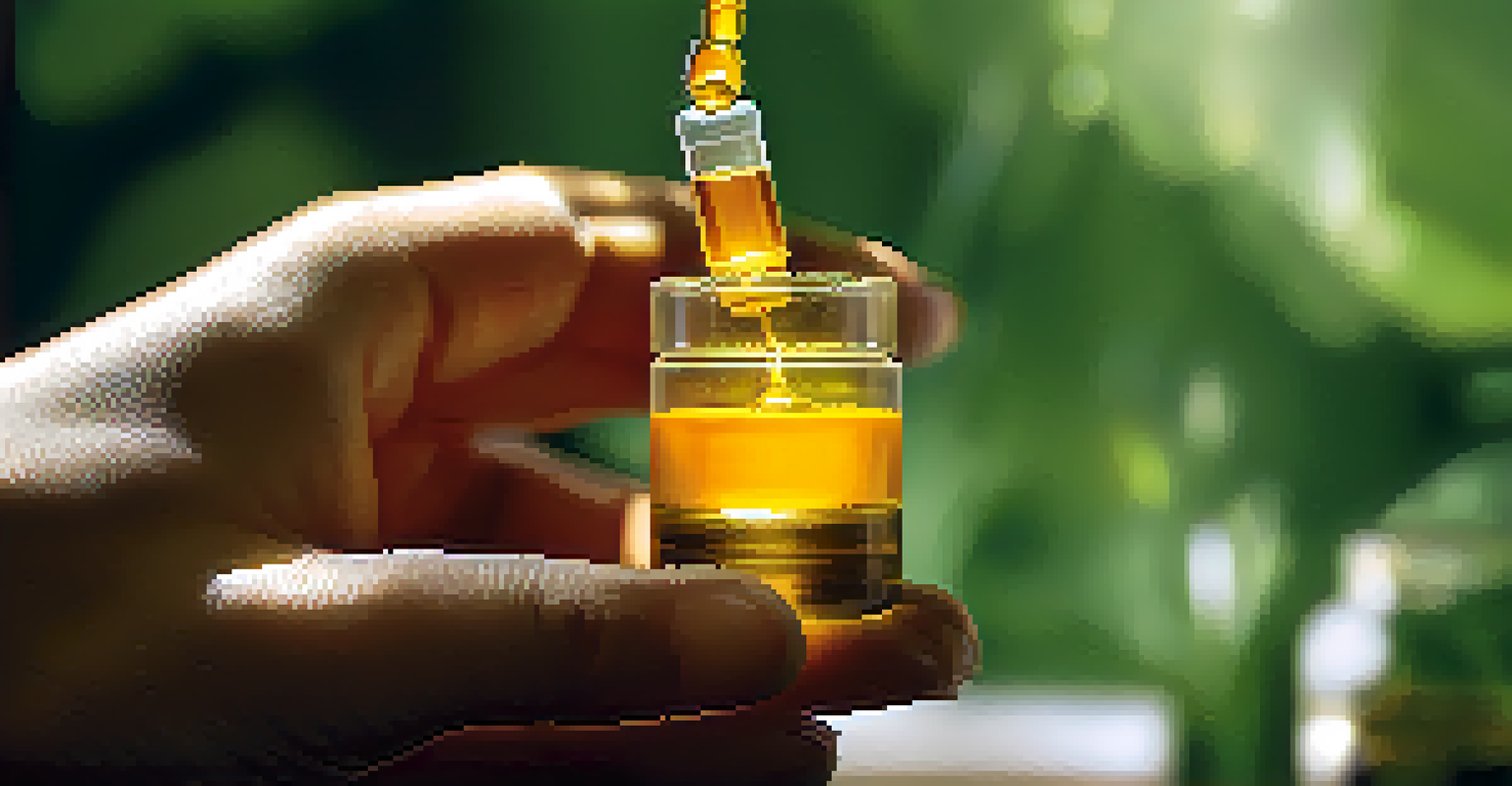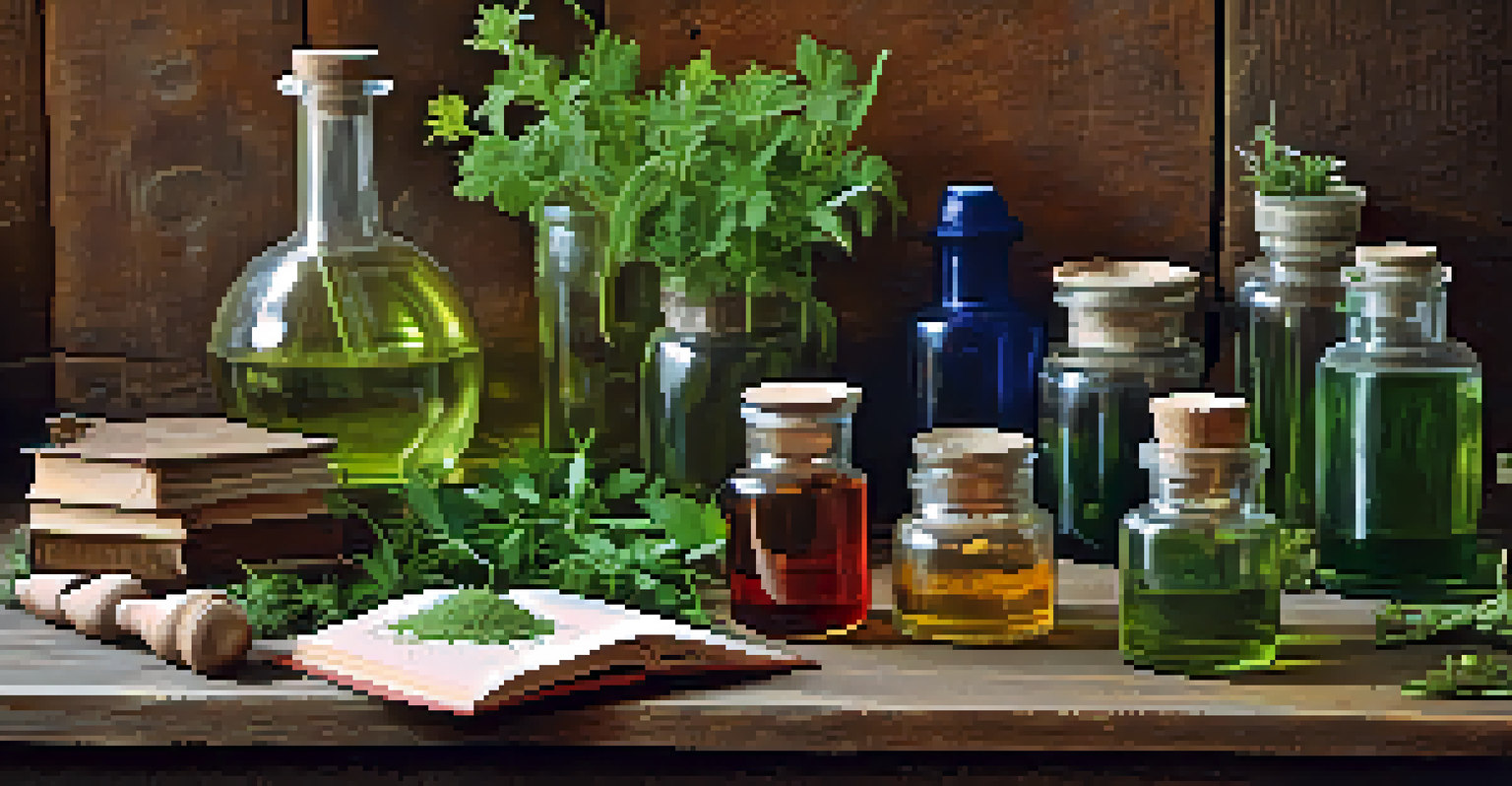The Science Behind Plant Extracts and Their Efficacy

What Are Plant Extracts and How Are They Made?
Plant extracts are concentrated forms of the beneficial compounds found in plants. They are typically created using methods such as steam distillation, cold pressing, or solvent extraction. Each method captures different compounds, resulting in extracts with unique properties and uses.
Herbs are the friend of the physician and the pride of the chemist.
For example, essential oils, a type of plant extract, are obtained through steam distillation and are known for their aromatic qualities and therapeutic benefits. In contrast, tinctures are made by soaking plant materials in alcohol, which draws out active ingredients. This variety in extraction methods allows for a rich palette of options in herbal remedies and cosmetics.
Understanding how these extracts are made helps us appreciate their potency and purpose. With the right extraction technique, we can harness the full potential of a plant's healing properties, making them a valuable resource in natural medicine.
The Active Compounds in Plant Extracts
Plant extracts contain a variety of active compounds, including flavonoids, alkaloids, and terpenes. These compounds are responsible for the therapeutic effects that many people seek in herbal remedies. For instance, flavonoids are known for their antioxidant properties, which help combat oxidative stress in the body.

Each type of extract carries a unique profile of these compounds, influencing its efficacy. For example, echinacea is often used to boost the immune system due to its high content of alkaloids. This diversity means that different extracts can be used for various health issues, from inflammation to anxiety.
Understanding Plant Extracts
Plant extracts are concentrated forms of beneficial compounds from plants, created through methods like steam distillation and cold pressing.
By understanding the specific compounds within plant extracts, consumers can make informed choices about which extracts to use for their health needs. This knowledge also underscores the importance of quality in sourcing and production to ensure the extracts are effective.
How Plant Extracts Interact with the Body
When consumed, plant extracts interact with the body's systems in various ways. They may bind to receptors, influence enzyme activity, or modulate cellular processes. This interaction is what makes them effective in supporting health and well-being.
The greatest medicine of all is teaching people how not to need it.
For example, curcumin, a compound found in turmeric, has been shown to inhibit inflammation by affecting specific pathways in the body. This kind of targeted action highlights how plant extracts can provide therapeutic benefits that are often more specific than synthetic alternatives.
Understanding these interactions is crucial for both consumers and healthcare practitioners. It enables them to use plant extracts more effectively, tailoring their use to individual health conditions and maximizing their benefits.
Efficacy of Plant Extracts: What the Research Says
Numerous studies have examined the efficacy of various plant extracts, providing evidence for their health benefits. For instance, research has shown that green tea extract can aid in weight loss and improve metabolic health due to its high concentration of catechins.
Similarly, studies on ginseng have demonstrated its ability to enhance cognitive function and reduce fatigue. These findings support the traditional uses of these extracts and highlight the importance of scientific validation in the world of herbal medicine.
Active Compounds Matter
The efficacy of plant extracts is determined by their unique active compounds, which influence their therapeutic effects.
However, it's essential to approach these studies with a critical eye. Not all extracts have robust research backing their efficacy, and individual responses can vary, making it crucial to consult healthcare professionals when considering their use.
Safety and Proper Use of Plant Extracts
While plant extracts can offer numerous health benefits, safety is a vital consideration. Not all extracts are suitable for everyone, and some can interact with medications or cause adverse reactions. It's essential to be aware of potential side effects and contraindications.
For example, St. John's Wort, often used for depression, can interfere with antidepressant medications and other drugs. This highlights the importance of consulting with healthcare professionals before starting any new herbal regimen.
Educating oneself on the proper use and dosage of plant extracts ensures they are used safely and effectively. By doing so, individuals can enjoy the benefits while minimizing risks.
The Role of Quality in Plant Extracts
The quality of plant extracts can significantly impact their efficacy. Factors such as the plant's growing conditions, the extraction method used, and the storage of the final product play crucial roles in determining the extract's potency and safety.
For instance, extracts from organically grown plants often contain higher concentrations of beneficial compounds compared to conventionally grown ones. This is due to the absence of synthetic pesticides and fertilizers, which can alter the plant's natural chemistry.
Safety and Quality are Key
Ensuring the quality and safe use of plant extracts is essential, as some can interact with medications and may not be suitable for everyone.
Consumers should look for reputable brands that prioritize quality and transparency. Certifications like organic or GMP (Good Manufacturing Practices) can guide in selecting high-quality products that deliver the promised health benefits.
Future Trends in Plant Extract Research
As interest in natural health solutions grows, research on plant extracts is becoming more robust and diverse. Scientists are exploring new extraction methods, such as supercritical CO2 extraction, which preserves more of the plant's compounds while reducing harmful solvents.
Furthermore, advancements in technology are enabling researchers to investigate the synergistic effects of multiple plant extracts. This could lead to the development of more effective herbal blends that harness the power of various compounds together.

The future of plant extract research looks promising, with potential for innovative products that cater to the evolving needs of consumers. As we continue to uncover the benefits of these natural remedies, they may play a more prominent role in mainstream healthcare.